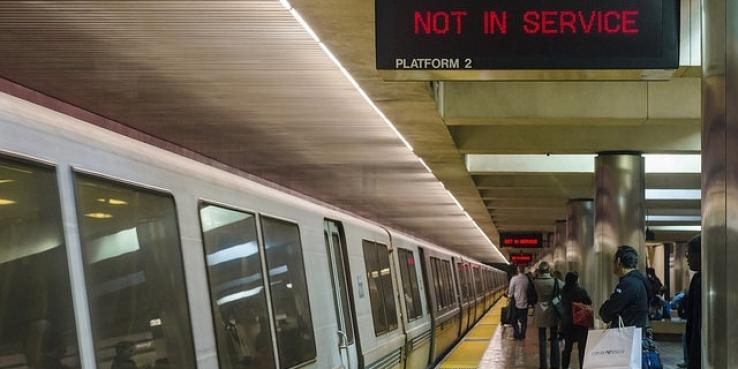BART was created in the early 1970s and over the last 40 years it has become central to the mobility, economic health and sustainability of the entire region. Today, hundreds of thousands of Bay Area residents rely on BART to get to jobs, school and to otherwise conduct their lives. Meanwhile, the system is deteriorating rapidly. Critical parts of the system that were installed when BART launched have not been replaced in its 40-plus years of service.
We must invest in BART if the system—originally built to carry 100,000 riders per week—is to continue to safely and reliably transport its ridership, which now numbers over 400,000 riders per day. With ridership expected to grow 75 percent by 2040, there is an urgent need to invest in upgrades that will increase BART’s capacity.
Measure RR funds the projects most needed to improve system performance and allow BART to plan for future capacity needs. Measure RR would authorize BART to issue $3.5 billion in general obligation bonds to fund core system renewal projects, including track replacement, tunnel repair, and computer and electrical system upgrades, to allow more frequent and reliable service. These are not “nice to haves.” They are fundamental upgrades crucial to keeping BART functioning.
Measure RR also includes funding to plan for future capacity needs, including a possible second transbay rail crossing — an essential piece of the Bay Area’s future transit network that we must begin planning for now.
Concerns about the use of the funds should be assuaged by the strong accountability measures built into Measure RR. Bond funds can only be used for infrastructure improvements. By law, Measure RR does not provide funding for operating expenses. An independent oversight committee, established by the measure, will review and oversee all program-fund expenditures and report directly to the public.
Daily BART users, semi-frequent users and non-users alike all benefit from an improved BART system. Measure RR means we can move more people by public transit. This means a reduction in greenhouse gas emissions and air pollution. It means we can reduce traffic congestion, maintain an essential service — particularly for households without a car — and preserve the backbone of our region’s transportation system.
Bay Area voters have an important choice to make in November. Across the country, public transportation systems are in decline. If we do not act now and pass Measure RR, we risk BART falling into greater stress and succumbing to a situation similar to that of Washington D.C.’s Metro rail. Plagued by derailments, fires and a host of safety issues, Metro service slowdowns are the norm and lines are shut down for repairs for months at a time.
The need to fix the BART system is urgent. We can no longer rely on an aging and inefficient system to safely and effectively keep people moving. Measure RR brings much-needed investments to BART when capacity and reliability constraints threaten its future and the livability and economic livelihood of the region. Ensuring that BART performs well into the future should be a top priority. We urge you to vote yes on Measure RR.
